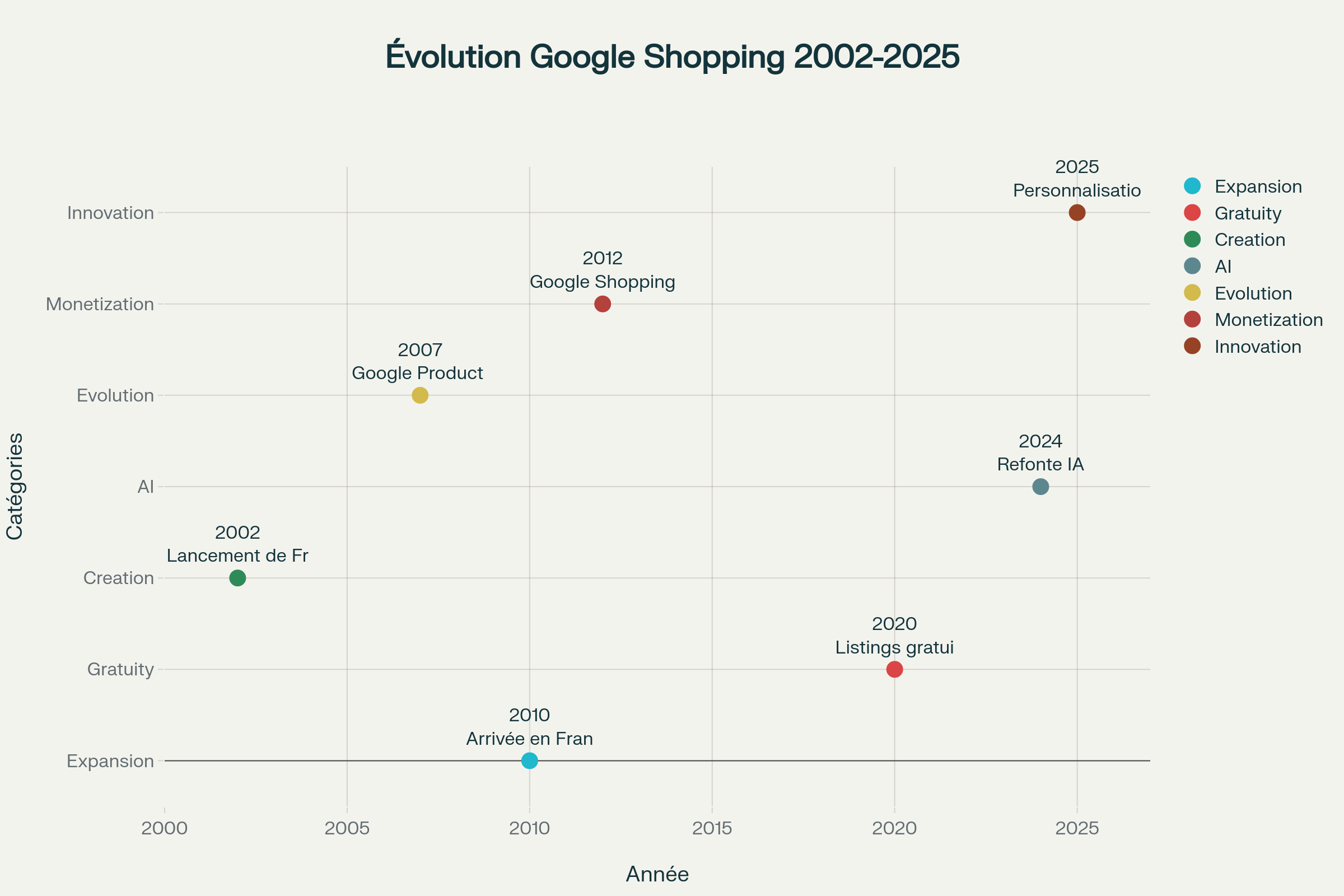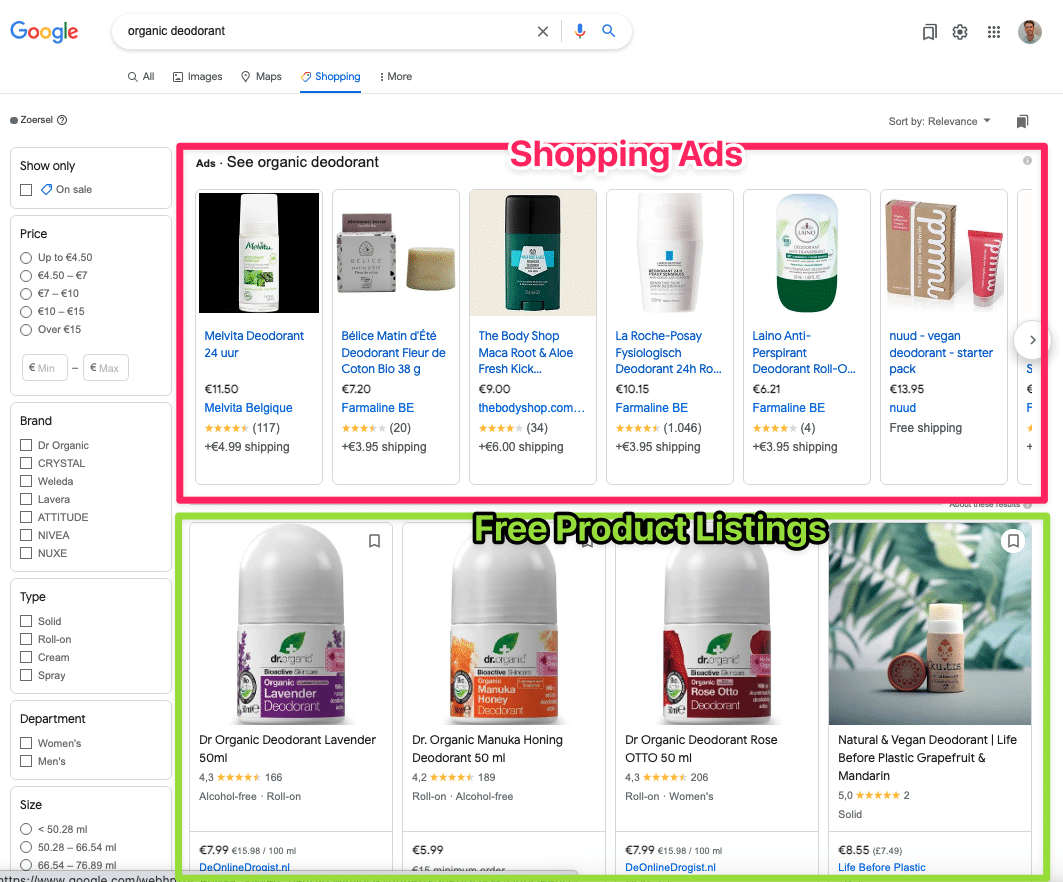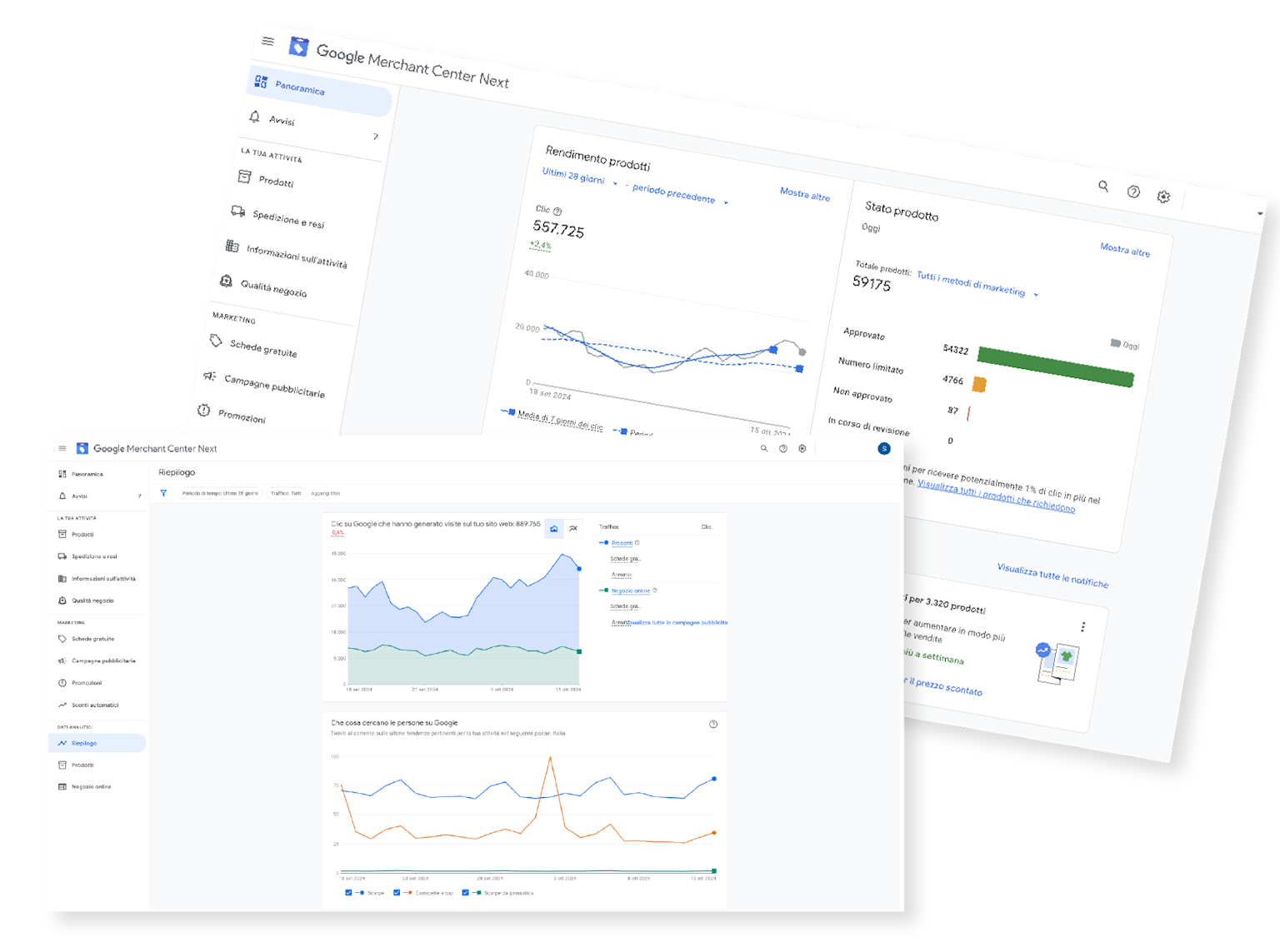🎁 Perplexity PRO offert
Google Shopping Evolution: From Froogle to AI Innovations (2002-2025)
Google Shopping today represents one of the most powerful levers of electronic commerce, responsible for 70% of online advertising revenue generated by Google Ads. This platform, which revolutionized how we discover and compare products online, has undergone remarkable evolution since its humble beginnings. From simple free comparator launched in 2002 under the name “Froogle” to sophisticated AI-powered platform in 2025, Google Shopping perfectly illustrates Google’s constant adaptation to changing digital commerce needs.

Introduction
In my e-commerce development practice for 15 years, I’ve witnessed this extraordinary transformation. This platform went from free service to paid model, then partially returned to free to finally embrace generative artificial intelligence. A true digital strategy lesson worth telling.
Modest Origins: The Froogle Era (2002-2007)
Birth of a Revolution
In 2002, Google discreetly launches a service called “Froogle”, portmanteau combining “frugal” and “Google”. This free price comparator, created by Craig Nevill-Manning, had a simple objective to help users search and compare products available online. In this pioneering era, e-merchants could list their products for free, Google contenting itself with monetizing the service via AdWords ads displayed on page sides.
The operation was rudimentary but revolutionary for the time: users entered a product name and saw appear a list of links to merchant sites offering this item. Froogle distinguished itself from competitors by its total free nature - neither commission on sales, nor payment to appear at top of results. Only technical conditions applied for product referencing.
A Different Philosophy
This approach sharply contrasted with traditional price comparator economic models of the era like Kelkoo. Google then favored result relevance based on its search algorithm, close to that of the main search engine, rather than on merchants’ payment ability. This philosophy reflected Google’s original values: organize world information and make it universally accessible and useful.

Professionalization: Google Product Search (2007-2012)
A Strategic Name Change
In 2007, Marissa Mayer, then vice president responsible for user experience at Google, announces Froogle’s renaming to “Google Product Search”. This decision responds to brand and copyright concerns that could slow service internationalization. The name “Froogle”, though creative, posed linguistic challenges in many international markets.
International Expansion
Google Product Search marks the beginning of ambitious geographical expansion. The service gradually extends to United States, United Kingdom, then Germany. In 2010, Google Product Search finally arrives in France, marking a crucial step for French e-commerce. Major brands like Fnac.com, Darty, La Redoute, PriceMinister, and Rue du Commerce quickly join the platform.
This period also sees constant service improvement with new feature integration: more sophisticated price comparison, better product data quality, and optimization for emerging mobile searches.
Ecosystem Under Construction
During this phase, Google develops the ecosystem necessary for optimal service operation. Google Merchant Center appears, allowing e-merchants to more efficiently manage their product feeds. In parallel, Product Listing Ads (PLA) are introduced, laying foundations for the future paid model.
Commercial Revolution: Paid Google Shopping (2012-2020)
A Rethought Economic Model
May 31, 2012 marks a decisive turning point in Google Shopping history. Google Product Search officially becomes “Google Shopping” and transitions to a fully monetized service. This transformation responds to several imperatives: massive increase in user numbers, intensified competition with Amazon and eBay, and the need to more efficiently hierarchize results.
The new model relies on a cost-per-click (CPC) bidding system, similar to Google Ads. Results are no longer solely based on algorithmic relevance, but on a combination between relevance and amount paid by merchants. This evolution raises concerns, particularly from small structures fearing they can no longer face large groups’ marketing budgets.
Impact on E-commerce Ecosystem
Google Shopping monetization radically transforms electronic commerce landscape. Statistics quickly reveal the new model’s effectiveness: in 2015, 164,200 French merchant sites are referenced on Google Shopping (out of 182,000 total), causing Google Shopping France advertiser budget to jump 47% compared to previous year.
Google Shopping campaigns now represent 74.6% of company advertising spending in United States and United Kingdom. This domination is explained by format’s remarkable effectiveness: Shopping ads display an average conversion rate of 1.76%, 30% higher than traditional text ads.
Google vs Amazon: A Declared War
This period sees rivalry between Google and Amazon intensify. In 2018, Amazon already represents a serious threat to Google with 55% of product searches in United States initiated directly on its platform. To counter this rise in power, Google discreetly launches Shopping Actions in France, progressively transforming its comparator into a true marketplace.

Return to Sources: Free Listings (2020-2023)
Pandemic as Catalyst
In April 2020, in the context of COVID-19 pandemic, Google announces a revolutionary decision: the return of free listings on Google Shopping. This support measure for merchants, particularly SMEs, allows merchants to display their products without commission. The initiative, launched first in United States, gradually extends to rest of world throughout 2020.
This strategic decision responds to several objectives. Offering a larger number of products means attracting a larger number of buyers. Google thus strengthens its position against Amazon by considerably enriching its product catalog through partnerships with Shopify (1.7 million merchants), WooCommerce, BigCommerce and other major e-commerce platforms.
An Innovative Hybrid Model
New Google Shopping adopts an innovative hybrid model combining free listings and paid ads. Paid results continue occupying privileged positions, while free listings appear below, offering organic visibility to merchants. This approach democratizes Google Shopping access while preserving advertising revenue.
Results of this strategy are convincing: free listings increase average click-through rate by 50% and number of impressions by 100%. This performance particularly benefits small and medium enterprises who can finally compete with e-commerce giants on Google’s platform.
“Surfaces Across Google” Expansion
In parallel, Google deploys the “Surfaces Across Google” program, allowing products to appear across the entire ecosystem: Google Search, Google Images, Google Lens, YouTube and Google Maps. This omnipresence considerably strengthens product ad reach, transforming Google Shopping into a true electronic commerce hub.

The Artificial Intelligence Era: 2024 Transformation
Google Merchant Center Next: Advanced Automation
2024 marks the beginning of a major technological revolution with Google Merchant Center Next deployment. This new version stands out for its ability to automatically detect product data: title, description, size, price and images are extracted directly from website and automatically integrated. This automation revolutionizes product feed management, traditionally complex and time-consuming.
The interface itself undergoes complete redesign, judged clearer and better organized. Product diagnostics are simplified, no longer showing evolution over time but focusing on current state: approval, review, limitation or non-approval. This approach facilitates merchant decision-making.
Product Studio and Content Creation
Google introduces Product Studio, a suite of tools allowing generating brand videos highlighting main product attributes. This feature transforms existing product images into dynamic videos in a few clicks, responding to growing demand for video content in e-commerce.
Virtual try-ons also appear for men’s and women’s clothing, allowing consumers to visualize products on different models. This innovation considerably reduces returns and improves online shopping experience.

Immediate Future: Google Shopping 2025
Generative AI Serving Shopping
2025 consecrates massive generative artificial intelligence integration into Google Shopping. The new interface combines Gemini (Google’s AI) with Shopping Graph, a database comprising over 45 billion products. This fusion revolutionizes user experience by offering ultra-personalized recommendations and intelligent product summaries.
Each search with purchase intent now becomes a “prompt” for AI. For example, a “winter coat for Seattle” search generates not only a product list, but also a summary of key points to consider before purchase, adapted to region’s climatic specifics.
Personalization and Immersive Experience
Google Shopping homepage becomes fully personalized, presenting specific products, videos and offers according to each user’s shopping behaviors. This shopping news feed allows resuming a search where it was interrupted, facilitating decision process spread over several days.
Virtual try-on extends thanks to augmented reality, allowing users to try clothes and accessories directly from Google Shopping. This feature, particularly relevant for fashion and beauty, reduces online purchase uncertainty and significantly improves conversion rates.
Advanced Comparison and Tracking Tools
Google Shopping 2025 introduces sophisticated price comparison and fluctuation tracking tools. A section dedicated to “personalized deals” allows quickly consulting offers corresponding to each user’s habits. Automatic alerts inform consumers of price drops on their favorite products, optimizing their purchase decisions.

Economic Impact and Key Statistics
Uncontested Domination
2025 figures confirm Google Shopping’s hegemonic position in electronic commerce ecosystem. 31.5% of buyers start their shopping journey on the platform, with over 1.2 billion monthly searches. This domination is explained by Google Shopping’s deep integration into Google ecosystem, which maintains 95% search engine market share in France.
Google Ads represents 60-70% of Google’s total revenue, and Google Shopping constitutes its largest part. This economic performance translates into direct impact on French digital economy: 37% of companies consider Google Search or Google Ads essential to their success.
Shopping Behavior Transformation
Google Shopping evolution has profoundly transformed consumption habits. Search engines generate 10 times more traffic to e-commerce sites than social media. More specifically, 25% of clicks are directed to a Google Shopping link when searching for a product online.
This behavioral transformation is accompanied by sector professionalization: in 2024, Google Shopping campaigns represent 76% of advertising spending versus 24% for text ads. This distribution illustrates visual format’s superior effectiveness offered by Google Shopping.
Challenges and Future Perspectives
Renewed Competition
Google Shopping evolution occurs in a constantly changing competitive context. The battle with Amazon intensifies, each giant starting from its “trench” to better dislodge the other: Google, advertising leader, develops its marketplace while Amazon, dominating e-commerce, strengthens its advertising capabilities.
A recent event illustrates this war: in July 2025, Amazon stopped all its bids on Google Shopping. This major strategic decision completely redistributes cards, offering unprecedented opportunities to other e-merchants with potentially lower cost-per-click (CPC).
Regulatory Challenges
Google Shopping faces significant regulatory challenges. In 2024, European Court of Justice confirmed the €2.4 billion fine imposed on Google for abuse of dominant position, sanctioning having favored its own comparison service to detriment of competitors. This decision could influence platform’s future evolution.
Continuous Innovation and Adaptation
Google Shopping’s future seems resolutely turned toward technological innovation. AI’s growing integration, augmented reality development, and continuous personalization improvement draw contours of an ever more sophisticated service. Google Shopping’s adaptation capacity, demonstrated through its multiple transformations since 2002, constitutes its main asset to maintain its dominant position.
Conclusion
Google Shopping’s story, from Froogle to 2025’s sophisticated AI platform, perfectly illustrates electronic commerce evolution and Google’s remarkable adaptability. In 23 years, this platform crossed all technological revolutions…
Article published on September 23, 2025 by Nicolas Dabène - E-commerce and AI expert with 15+ years of experience
Questions Fréquentes
How to optimize referencing on Google Shopping in 2025?
The key lies in product data quality, using Google Merchant Center Next for automation, and adapting to new AI personalization and recommendation features.
Can small businesses still compete on Google Shopping?
Absolutely. The return of free listings in 2020 and new automation tools democratize access. Amazon’s withdrawal from Google Shopping also frees up significant opportunities.
What's the difference between Google Shopping and Amazon?
Google Shopping works as a comparator directing to external merchant sites, while Amazon is a centralized marketplace. Google focuses on discovery via search, Amazon on direct purchase on its platform.
Articles Liés
Créer votre Premier Outil MCP : L'Outil readFile Expliqué
Du setup à l'action ! Créez votre premier outil MCP fonctionnel qui permet à une IA de lire des fichiers. Code comple...
Vous laisseriez un Dev Junior coder sans supervision ? Alors pourquoi l'IA ?
84% des développeurs utilisent l'IA, mais 45% du code généré contient des vulnérabilités. Découvrez pourquoi l'IA néc...
Préparer votre boutique PrestaShop pour le Black Friday 2025 avec le module Advanced Search Pro
Découvrez comment le module Advanced Search Pro peut transformer votre boutique PrestaShop en machine à ventes pour l...
Le Guide Définitif pour Mesurer le GEO : Du Classement SEO à l'Influence IA
L'émergence des moteurs génératifs a catalysé une transformation fondamentale du marketing numérique. Découvrez le ca...
Google Shopping & Black Friday 2025 : Guide Complet pour PrestaShop
Découvrez comment optimiser votre présence Google Shopping pour le Black Friday 2025 en Europe et maximiser vos reven...
Comprendre le Model Context Protocol (MCP) : Une Conversation Simple
Découvrez comment les IA peuvent accéder à vos fichiers et données grâce au MCP, expliqué à travers une conversation ...
Découvrez mes autres articles
Guides e-commerce, tutoriels PrestaShop et bonnes pratiques pour développeurs
Voir tous les articles






